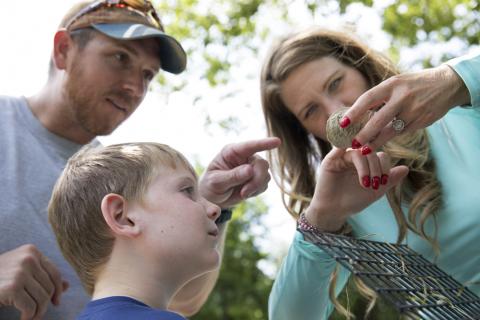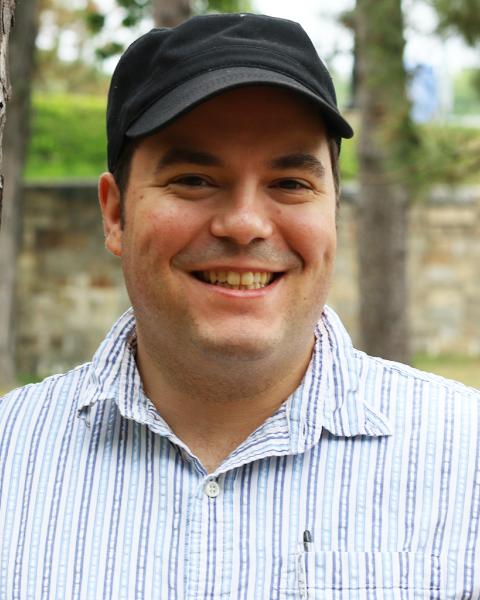
Top photo © Jennifer Emerling
Sometimes, the best stories happen when we’re not looking. Hours, days, weeks and years pass, and before we know it, we have a wealth of tales to look back on. That’s often the case for the volunteer citizen scientists who channel their passion for conservation, wildlife, research and more into scientific research that impacts New Hampshire. Hour by hour, that volunteer work adds up to a story that must be told.
Five storytellers from throughout the state will share their own tales from the frontlines of citizen science at Stories from the Field, a night of live storytelling on Friday, Dec. 8 at 3S Artspace in Portsmouth. Citizen science is an international movement that’s thriving in the Granite State, with thousands of volunteers participating in more than four dozen projects. From the long-running Lakes Lay Monitoring Program to annual N.H. loon census, citizen scientists have played an important role in research conducted throughout the state.
Before the event, we asked volunteers to share some of the reasons why they take part in citizen science. Here are their stories.

Fifty years ago, my husband John and I were anxiously watching the tides — and weather — on the Bellamy River. We were preparing for our wedding party, which would take place in the yard overlooking the tidal river — one does not want too much mudflat in the background when having wedding photos taken. Many of our wedding guests did not understand the function of the estuary and its changing tides. For example, one gentleman asked if we could only fish at noontime when the tide was high. Who knew that tides and times are not married in just that way? This year, on our 50th wedding anniversary, we watched the tide again waiting for it to ebb. Then we pulled up the oyster crate and measured and counted our oyster babies.
—Jody Bloom, volunteer oyster conservationist, The Nature Conservancy
One of the cool things about citizen science is that it's a great activity to participate in with your children. When my daughter, Gretchen, was in high school, she needed a project for her Environment Science class. It so happened that the Ashuelot Valley Environmental Observatory was just beginning a culvert survey to assess culverts for wildlife passage: a ready-made project! Gretchen and I trained together and surveyed culverts in our town and neighboring towns. Along the way, we enjoyed the time spent together, learned a lot and found the "Cadillac of culverts," a large culvert that passes under Route 9 in Stoddard. This culvert has a fish ladder and a walkway, so that hikers (and animals) on the Monadnock-Sunapee Greenway need not cross a busy highway. Now, we can see the results of our work as towns in our region put in improved culverts not only for wildlife passage, but also to mitigate flooding during major rain events. Our work made a difference.
—Kathy Schillemat, Salamander Crossing Brigades volunteer

The various projects UNH Cooperative Extension offers are like a citizen science sampling adventure! I enjoy being involved in as many different areas as I can. Whether it's restoring the eroding sand dunes at the beach, collecting bunny pellets for analysis, adding or removing plants within an ecosystem, or catching and measuring slippery sea creatures, it's always rewarding, educational, and a great time. There are projects that appeal to all types, so you can stick with one area of interest or try them all, like I do! Being outdoors, meeting like-minded people, protecting wildlife, learning new skills, contributing to science at a local level — what more could you ask for?
—Holly Hanford Oliver, Coastal Research Volunteers
For more inspiring citizen science stories like these, join us for Stories from the Field on Friday, Dec. 8 at 3S Artspace in Portsmouth.

